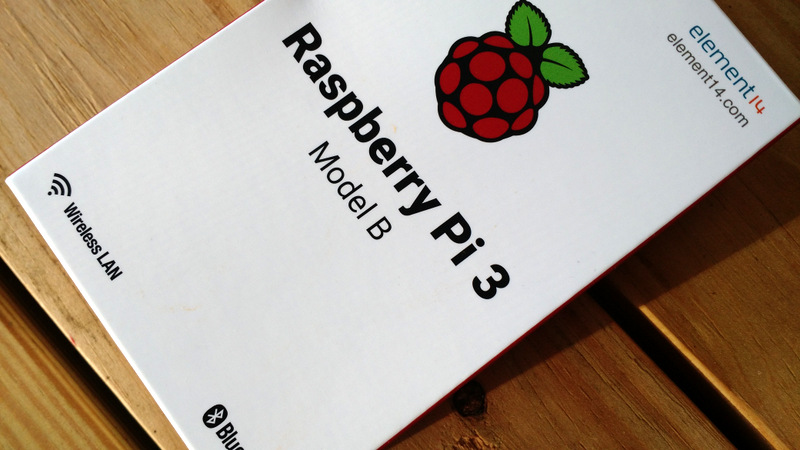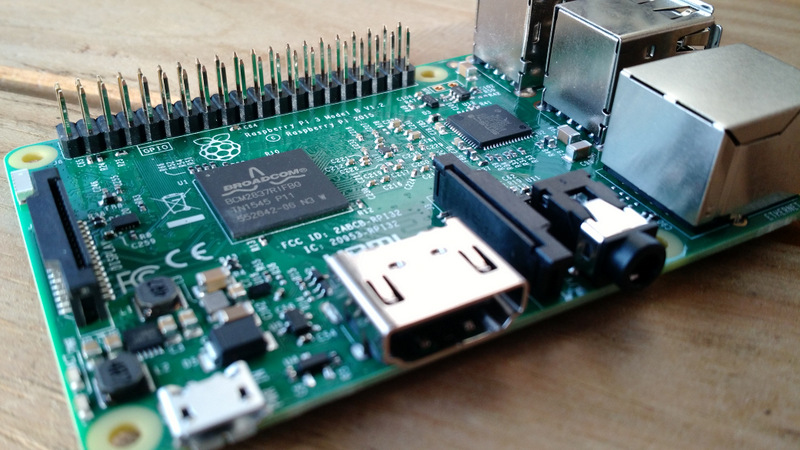I just received the recently released Raspberry Pi 3 that I ordered from MCM a couple weeks ago.
Now I’m plotting a few potential radio projects!
Recommendations anyone?
I’d love some input from SWLing Post readers as I’d like to feature a few Raspberry Pi projects here (and I’d certainly welcome your guest posts!).
I’d love to run my RTL-SDR or (better yet) SDRplay RSP with the Pi 3, but I’m sure there are a number of other projects I’ve never considered. I also have the original Raspberry Pi, but what I love about the Pi 3 is built-in wireless connectivity–of course, it’s faster than the original Pi, so I’m sure that’ll help with many radio applications.
Please comment with your suggestions and Raspberry Pi experience! I’m all ears!




hi thank for the good way of explaning but here is my question ,mp3 file doesnt workin here 🙂 why????
and also edited .wav files also not working can you explain me how can i deal with this kind of thing :))) thanks
It looks like Pi2FM works on the Pi3.
hey everyone (that knows what their doing), i bought the pi 3 less than a week ago and i cant seem to get the radio transmitter to work at all, ive added an antenna to GPIO pin 4 and still nothing and iv gone to the icrobotics web page and downloaded the PiFm tar gz file extracted it and ran the code as follows…. sudo ./pifm sound.wav 108.1 also tried several other channels such as 87.0 89.1 98.1 and some others but still nothing. any ideas would be great. Im running raspbian 2016.03 on a usb drive and using berryboot on a 2GB SD card to boot into it. I’m also typing this on the Pi rate now…
Top tip:
Only use the MicroSD card as the bootloader and use a SSD via USB as your main OS storage (or something that has a strong write capability, or at least better than what you have, even a 2.5″ HDD drive would do), otherwise your MicroSD card will wear out very quickly and crater. I have had MicroSD cards lasting a couple of months for 24/7 logging operation at best (3 mths if you are really lucky), then you will run into all sorts of issues, even with optimised write cycles/disabling swap/vm etc. You think you are getting away with it, then you reboot after an update and boom…rebuild with a new card. If you insist on using MicroSD cards as your main OS, take a backup image of the card once you have built the system with all your apps/updates and ensure swap and other write cycle overheads like journalling, noatime mount flag etc. are disabled and move /var/tmp to RAM.
MicroSD cards were only ever really designed for short term storage and constant write cycles are not in their DNA.
I have the Pi3 with the touchscreen, but not had time to play with the touchscreen yet…..or build my pi auto rx tuner for my homebrew mag loop.
Cap
For more than a year I published the same opinion here in Germany. Another school of thought said the biggest danger was turning off the power without a prior shutdown. But this you seem to have avoided.
In the German-speaking ham community the special Raspian distribution “HAMserverPi” is very popular in HAMNET, our “ham intranet”. Quite some of these Raspies went down with defective SD cards. If you have access to the 44.0.0.0/8 net, try http://db0tv.ampr.org – there one of these Raspi servers works. Those ampr.org addresses can be resolved over the Internet DNS. But access will not be possible.
Another weakness is the single USB port of the SoC (system on a chip, the mail processing unit). All USB traffic must go through this. Quite some alternatives to the Raspberry Pi are better in this respect.
Okay–I’ve noted this. In fact, one reader reminded me that Western Digital recently made a RaspPi 314 GB HD:
http://wdlabs.wd.com/products/wd-pidrive-314gb/
Though I know very little about drives and Raspberry Pis, it makes sense that the boot disk and storage disks are separate.
-Thomas
Yes indeed, using a SSD will bottleneck due to the very slow USB speed, but it will be faster than a MicroSD. It is also worth it for longevity of your Pi3 OS operation.
If you’re going to add a HDD to the pi, and you are running Raspian on it, Look at learn.adafruit.com and check out how they are able to put the root filesystem on an external drive and then just boot off the SD card. I have been doing this since I’ve know about it a year or two ago. Still running the same SD card for my original pi, 2 pi 2’s and I’ll be doing it wiith my pi 3 once I get home to pick it up.
I actually tried out RTL-SDR + Raspi 2 for the first time a few days ago and it was …. frustrating. I had some package repository issues with apt on Raspbian, and ultimately it took a ton of guesswork to find a repository that had available all the pre-requisites for it to work.
Subsequently, when I run rtl_tcp now the Raspi hangs/crashes. I’m suspecting this might have something to do with a cheap USB Hub I have two of the R820T2 generic sticks plugged into.
I know it works based on others experiences, but it hasn’t been all roses for me here unfortunately!
That’s discouraging. I must admit, there would be a decent learning curve for me to troubleshoot something like this as I haven’t tinkered with Linux code in ages. It would be brilliant if there was already an application in place for the most universal RTL-SDR setup.
Let me know if you succeed in getting your SDR dongle on the air.
-Thomas
A tiny digital mode decoder, perhaps with a small screen, decoding PSK, RTTY, etc? The wifi would allow you to forgo a screen and control it from a smartphone/tablet.
Great idea!
Thomas
You do know that the Raspberry Pi can be made into a very low-power transmitter, right?
http://makezine.com/projects/pirate-radio-throwies/
Of course, this is better suited to the $5 Raspberry Pi Zero than the $30 Pi 3.
Oh yeah! In fact, my first Pi project was a Raspberry Pirate: https://swling.com/blog/2014/03/my-raspberry-pirate-is-now-radio-active/
Uber simple!
Thanks,
Thomas
The Raspi 3 would be a great server for the SDRplay!
Consider using a 5 V solar power supply, a Raspi 3, a SDRplay and a good SW antenna. Perhaps add a wireless power switch to minimize pwer consumption when you do not listen.
Then put this in the far corner of your garden where RFI is at a minimum…
While I don’t have many RFI problems here at the QTH, the first project that came to mind was this very thing. I like the idea of having a receiver that is fully contained outdoors and one that, if hit by lightening, would minimize damage to my home shack. AS it is now, I tend to unplug all antennas when not in use (during t-storm season).
Thomas